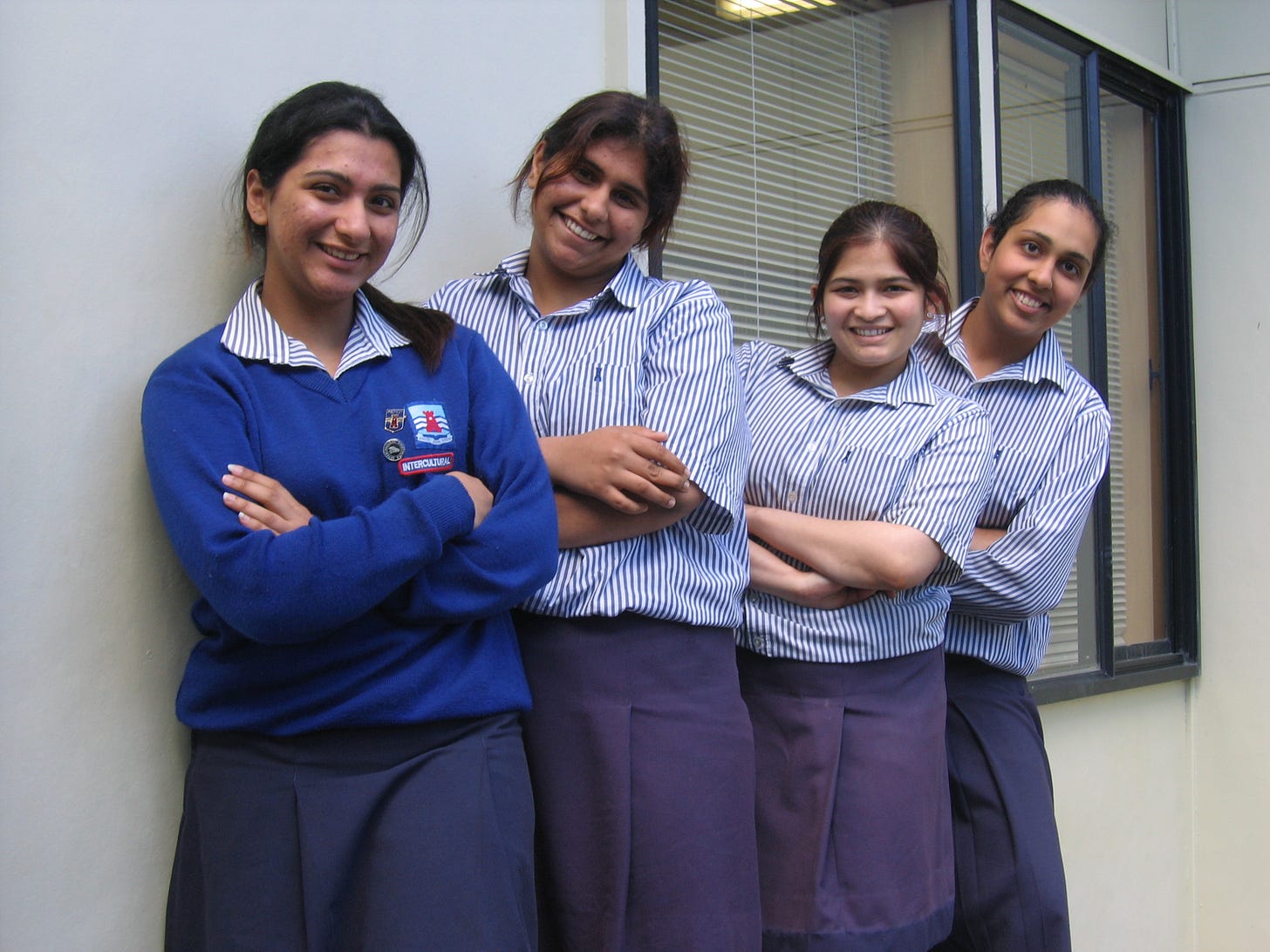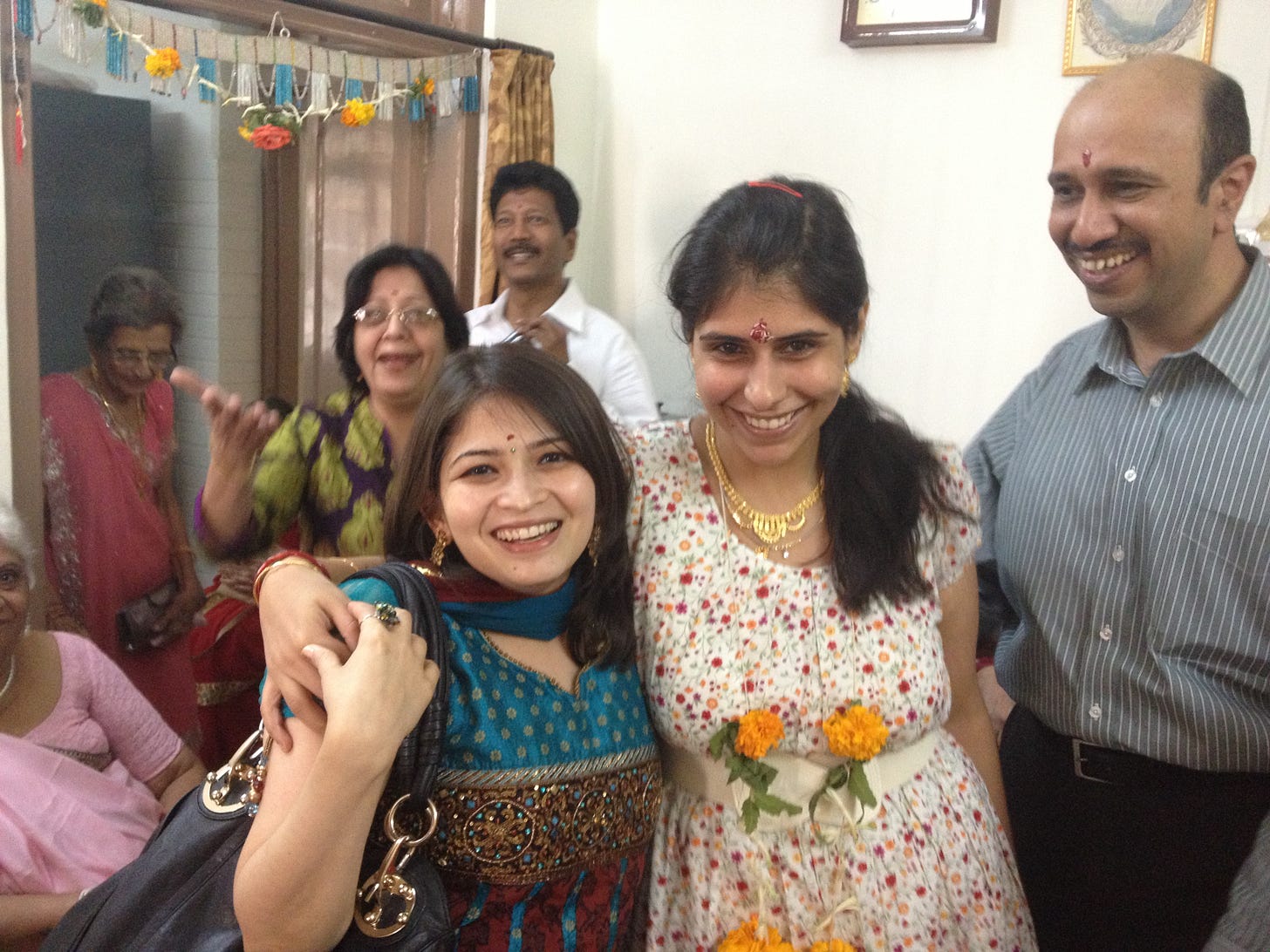A friendship of many layers, like Dahl Makhani
Some days you taste the smokiness and other days the tanginess
My feet feel sore, but my heart is light. A cool, inky black night is settling upon us, and I notice the first couple of stars shining in the now-dark-blue sky. The iWatch on my hand buzzes to tell me all my rings have closed for the day. What time is it? Heart picking up speed, I check my watch only to realise it’s now 9 pm.
Shweta and I left home for a quick walk at 6.45 pm. Had we really been walking and talking for over two hours? It felt like we had only just left the kids behind at home to go for a quick walk.
I first met Shweta when I was a plump, pimple-faced, insecure 15-year-old teenager. That means we’ve now been friends for 20 years.
After my parents, it’s one of my longest relationships.
But, we’ve spent more time apart than together. First, Shweta went away to Otaga University in Dunedin. Then, she moved to Sydney. Later, I moved to India for six years. And, when I moved back home to New Zealand, she moved to India.
Our friendship has also never just been her and me. We were a group of four girls that almost always hung out together until life pulled us apart in different directions.
So, this closeness I feel with Shweta is new. I get the same jitters before our walks as I did when I started talking to a new boy. What will we do today? Will we go to third base or just hold hands?
With her, I know that I’m not just catching up on the latest gossip, talking about food I ate or discussing something I’m struggling with at home or in my business. It’s everything and nothing.
A chance conversation with Dad about the loneliness he felt when I unintentionally picked sides during his divorce from Mum. That, Esther Perel, thinks long-term relationships need rituals to nourish them. Anxiety and how running is helping. The weirdness of being friends with our parents. A new book about money, especially for women. How tough it is to find community as a woman of “a certain age”. Finding our people.
I talk, she listens. We walk in silence. She confesses something under her breath. I push. But not too hard. Another time, we talk over each other excitedly. She calls me on my crap. One of us spirals into guilt. The other reminds a deep breath is in order. It’s a dance that’s old but new. A gentle caress on the back one time and a sharp stomp of the heel on the foot another time.
As we reach her car, we hug tight. I feel tears pricking my eyes. I don’t know why I’m crying. We haven’t hugged like this in years. Later that night, while our house smells of ghee and the aroma of smoky spice from my Dahl Makhani lingers in the air, Rushad asks me what we spoke about for so long. I laugh and say everything and nothing.
He doesn’t get it. I tell him talking to her fills my cup. He jokes and asks me, which cup. We let it go.
It’s not until we eat the Dahl Makhani that’s been slow-cooking for lunch the next day that I know the words.
What I have with Shweta right now is like a Dahl Makhani you slow-cook for 12 hours. It’s creamy and complex.
Comforting like only a bowl of dahl can be yet with layers of flavour. Some days you taste the smokiness of the kasuri methi, another day, the tanginess of the tomato cuts through the cream. Hard, tough, black lentils and kidney beans coming together in a spicy yet soothing blend like only a friendship of 20 years can.
What is Dahl Makhani?
Rich, creamy, buttery, and smoky, Dahl Makhani is a very popular North Indian lentil dish made using whole black lentils known as urad dal, lots of ghee and mild spices. The name literally stands for buttery dahl. While you can make it using a pressure cooker or an Instant Pot, you’ll do this dish an injustice by cooking it this way. Because Dahl Makhani tastes best slow-cooked. My favourite version is when it’s slow-cooked and smoked with charcoal because the smokiness adds layers of flavour.
Dahl Makhani also goes by Maa Ki Dahl (Mother’s Dahl) or Kaali Dahl (Black Dahl). History rumours tell us that Kundan Lal Jaggi and Kundan Lal Gujral, both Punjabi Hindu migrants from Peshawar, Pakistan, had already invented butter chicken and were looking to create a vegetarian dish that would complement it. A regular diner at their restaurant Moti Mahal, suggested that something exciting could be created out of urad dal, commonly used in traditional dishes, leading to the invention of Dahl Makhani.
The name Maa Ki Dahl hints that a variation of the dish has been around for centuries, but it gained popularity around 1947 when the buttery, more creamy version was introduced at Moti Mahal.
A word of caution. False recipes abound for Dahl Makhani, where brown lentils are used instead of black, or the author suggests using coconut cream instead of ghee, butter and cream to make it healthy. While all of these versions may taste delicious, you’re not making Dahl Makhani without the Makhan, the butter.
Dahl Makhani for 4-6
To Cook The Lentils
200gm whole black lentils (black urad)
100gm red kidney beans (rajma)
50gm split chickpea lentils (chana dal)
4 dollops of ghee and then 2 dollops at the end
2 onions, finely chopped
2 tbsp ginger garlic paste
Couple of bay leaves and cinnamon sticks
2 tsp red chilli powder (or less if you can’t handle spice)
400gm diced tomatoes; canned will do
2-3 tbsp tomato paste
½ teaspoon cumin powder
3 tbsp good quality garam masala
Dollop of butter (salted or unsalted)
100gm heavy cream
1 tablespoon Kasuri methi (dried fenugreek)
Salt to taste
Optional: 2 pieces of charcoal and a tsp of oil
Preparation
Wash whole black lentils, split chickpea lentils, and red kidney beans with water and soak them together or separately in 3-4 cups of water for 8-10 hours or overnight.
Rinse and drain.
Tempering
Heat a saucepan. Add in the four dollops of ghee. Add the bay leaves and cinnamon sticks when the ghee starts to shimmer.
Quickly after, add the onion. On medium heat, cook the onion until it is golden brown. This might take a while, be patient. You may want to sprinkle some water toward the end if the onion starts to stick/help with the browning.
When the onion is brown, add the ginger-garlic paste and the tomatoes. Follow that up with the chilli powder and cumin powder. Mix everything together and allow to cook until the tomato looks mushy.
In a slow cooker, add the onion-tomato mixture and sprinkle in the garam masala.
Add the mixed lentils into the slow cooker. Top up with about two cups of water. Mix well.
Cover and slow-cook for 8-10 hours until the kidney beans are completely tender. Do not add salt now, as it slows the cooking process. Keep checking on the lentils every 1-2 hours and give them a mix.
Your lentils should fall apart at the push of a fork. If that’s not happening, cook them for longer.
When your lentils are ready, add salt. They may taste spicy, don’t worry.
Empty the whole thing into a big saucepan. Using a potato masher or back of a spatula, give them a rough mash. You want about half the lentils to disintegrate into the gravy and the other half to be whole. This will give you a nice thick gravy.
Now add in the butter, ghee, cream and kasuri methi. Mix well and adjust the seasoning.
Smoke The Lentils (Optional)
Once the dahl is ready, you can serve it right away or infuse it with a smoky flavour for more depth.
To do this, heat a piece of coal over direct flame until it is red hot. Keep a bowl in the center of your Dahl saucepan and keep the hot coal in the bowl. Drizzle a few teaspoon of oil over the coal and immediately close the lid of the skillet. Let the dahl absorb the smoke for 10 minutes. Open the lid, discard the coal and remove the bowl. Heat the dahl once again and serve.
If you don’t have a slow cooker, here are some options
Instant Pot/Pressure Cooker
Complete your dahl tempering
Add the mixture to your lentils and pressure cook for 45. Release the pressure and cook for a further 10 minutes
Follow steps 8-10 above and the smoking if you wish to do that
Slow cook on the stove
You can follow the exact same steps as the slow-cooker but allow the dahl to slow cook on the stove on a medium-low heat while covered. You’ll need to stir every 20 - 30 minutes and will possibly need to add more water if it becomes too thick. As the dahl bubbles, it will probably make a mess. Might be easier to buy a slow cooker =)







